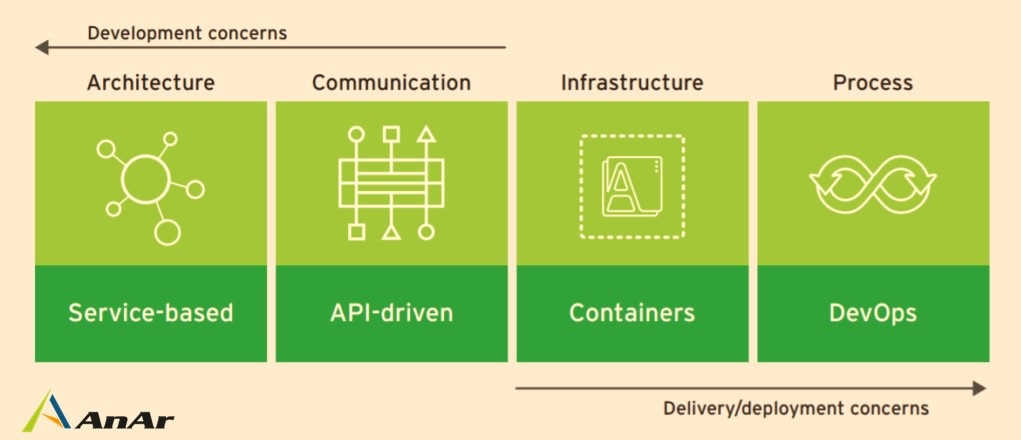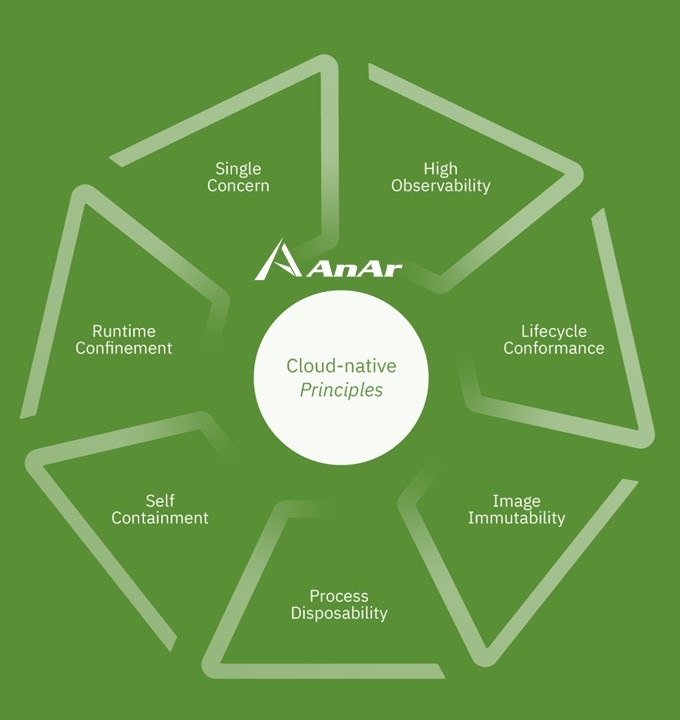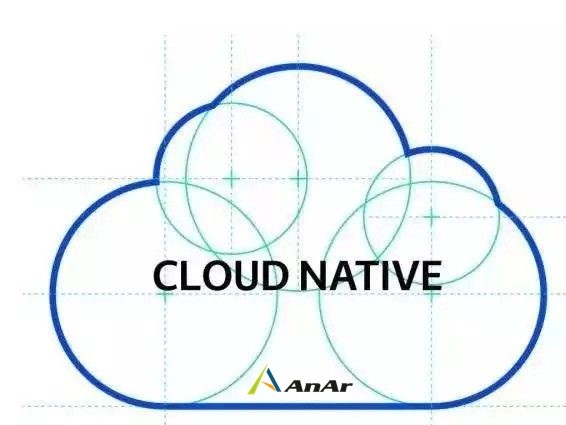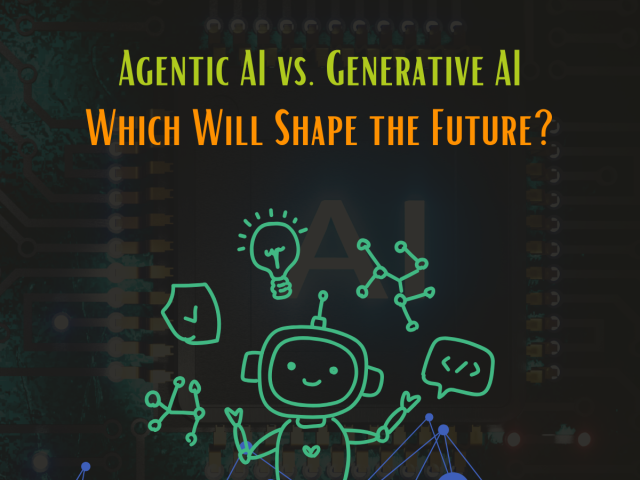Cloud Native Applications are independent services, collectively but loosely coupled. Cloud native development is an approach to build quality apps. It is efficient as Cloud native development focuses on architecture’s modularity. We need DevOps, Microservices and Containers for cloud native.
Cloud Native Application Architecture is built for running in the cloud. Application on the cloud can be built using various programming languages e.g., HTML, CSS, Java, JavaScript, .NET, Go, Node.js, PHP, Python or Ruby. It uses containers that helps in easy deployment on any cloud platform AWS, IBM, or Google.
Implementing cloud native applications is simple and efficient as no hardware and software configurations are required. Kubernetes developed by Google is an operating system to deploy cloud-native applications.
Benefits of Cloud Native Application Architecture:
- Focus on code, not infrastructure
- Explore and enhance business capabilities
- Removes constraints of speedy innovation
- Have an experimental approach
- Smaller deployments and speedy recovery for faster market reach
- Gather accurate feedback and correspondingly set customer expectations
- Gives the ability to respond to the change
- Eliminates gaps raised due to loss of focus on customer
- Agility and scalability for better service to customers
- API integrated platforms improve productivity
- Easy Access to latest tools and services
- Globally available events for automating workflows
- Faster identification and problem solving
- Minimize efforts to manage infrastructure
- Higher transparency for better decision making
- Automate scale up and scale down according to the traffic
- Auto redundancy minimizes the failure
- Brings precision and predictability to the outcome
- Provides modern monitoring framework
- Path of continuous improvement
- Highly scalable as real-time changes are made interrupting the application as a whole
- Faster and direct access to legacy assets
Predictions on Cloud Native Application Architecture:
- About 60% of organizations are expected to invest in cloud native applications for automation, orchestration, and development life-cycle management by the year 2022.
- By 2024, almost 50% of the large enterprises across the globe will rely on cloud-native application development.
- Market size of serverless architecture by 2025 is projected to reach 21,988 million USD.
- By 2025, 80% of the critical enterprise workloads will move to the cloud
Top 4 Cloud Native Application Architecture Principles:
1. Automate the Infrastructure:
- The initial investment for automation might be higher but attract favorable rewards. Automate both deployment and the processes. Continuous Integration is of great use to build and test the automated applications. Continuous deployment is a completely automated pipeline, unlike continuous delivery.
- Business applications depend on various software solutions that must act immediately to remain competitive. Cloud native applications components usually discover the peers with which they communicate via shared configuration store or DNS (Domain Name Server).
- Infrastructure as code reduces risks and costs of deployment. IAC tools such as Deployment Manager, Terraform, Chef, Packer and a few others help you in the automation of repeatable tasks. These tools enable the rapid adoption of cloud technologies. Automating Canary Analysis allows you to test the latest version of your application to a small part of your product traffic for behavior analysis.
- Scale up is for systems that have rising or fluctuating loads. Autoscaling empowers you to handle traffic and reduce costs when the consumption of resources is low. Managed instance groups (MIGs) let you automatically add or delete virtual machines. It does not support unmanaged instance groups. Autoscaling works with zonal and regional MIGs. The autoscaler adds or deletes instances from the managed instance groups. Scaling is done on CPU utilization, serving capacity of HTTPs, or cloud monitoring metrics. Autoscaling mode is to schedule, configure or restrict autoscaling activities.
- Monitor and automate recovery on cloud native-systems. Collect, process, and display real-time data. The number of queries, errors and time taken to process requests everything can be monitored. You can track bugs, their root cause, and then plan actions. Size of the database is always a concern so track its growth and also find if something needs to be fixed. Study the symptoms and act e.g., slow responses are caused due to overloaded CPUs or any other reason. System monitoring and analysis protects you from security breaches.
For automation to be flawless, an application should be well-designed.
2. Stateless Design Components:
- Cloud services are loosely coupled making them stateless. Unlike on-premise applications, these applications are not tied to infrastructure. Cloud native applications have separate components for transaction processing and state storage. The components of the application should focus on the simplification of the process. It should minimize the amount of configuration that is necessary to be injected into each component.
- The servers do not remember any state about the client alternatively the session data is stored by the client and then passed to the server when needed. Stateless architecture is most suitable for clients that face connectivity issues. They can work offline and then merge the local session to the cloud. The applications will require to remember session and domain state for the user’s benefit. To remember the session for a long duration then it needs to manage the state and becomes stateful.
- The stateless approach saves you from overheads of maintaining the state of sessions. The stateless protocols are ideal for high volume applications. It elevates the performance by removing the load caused by the conservation of session information.
- The applications are built to create, read, edit, and delete these stateful items. Stateless is used to scale up and scale down by adding new copies or terminating on task completion respectively. Repairs of failed instance is quite easy as you can replace. Rollback in case of unsatisfactory deployment should be simply terminated to launch instances of an old version.
Lesser costs involved in the deployment assist to meet objectives of speed and scalability and benefit all size of companies.
3. Managed Services
- Microservices carry out the important function as the containers compress the software code and dependencies into smaller lightweight packages. It is a must to test and deploy packages on any infrastructure.
- Managed services are savior of operational costs for organizations if they stick to a particular cloud service provider. Open-source compatible interface e.g., Cloud Bigtable holds higher benefits compared to risks.
- When it’s about services in Cloud Native Application Architecture, you need to know that few services do not have an open-source alternative or are incompatible with open source. If they are beneficial it’s worth taking risks. It is observed that the majority of cloud-native architectures favor the managed services.
4. Keep on the Architectural Innovation
- Experimentation is requisite to understand the needs of an organization. Security is of fundamental importance. Secured applications and IT infrastructure make it easy and safe to manage.
- Stagnant is good but change is inevitable when performance concerns you. Monitoring allows improving so continuous evaluation is a must. Change the approach before it’s too late and don’t forget to keep trailing before implementation.
- Guidelines to adopt cloud architecture can help you to design it using various Cloud Native Application Architecture Principles. Improvement in architecture will improve deliverables and quality.
Cloud Native Applications provides a data-driven response to your queries over business actions. It offers superior functionality and consistency to cloud-based applications. Cloud Native Application Architecture allows you to focus on customer experience not just the technology. Undoubtedly, the Cloud Native Application Architecture continuously evolve, which gives leverage and a competitive edge to enterprises.









